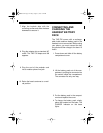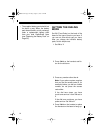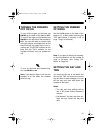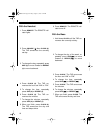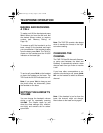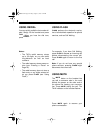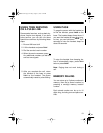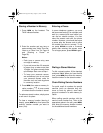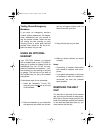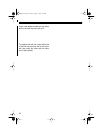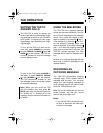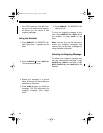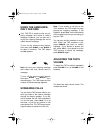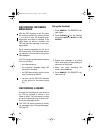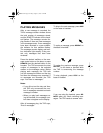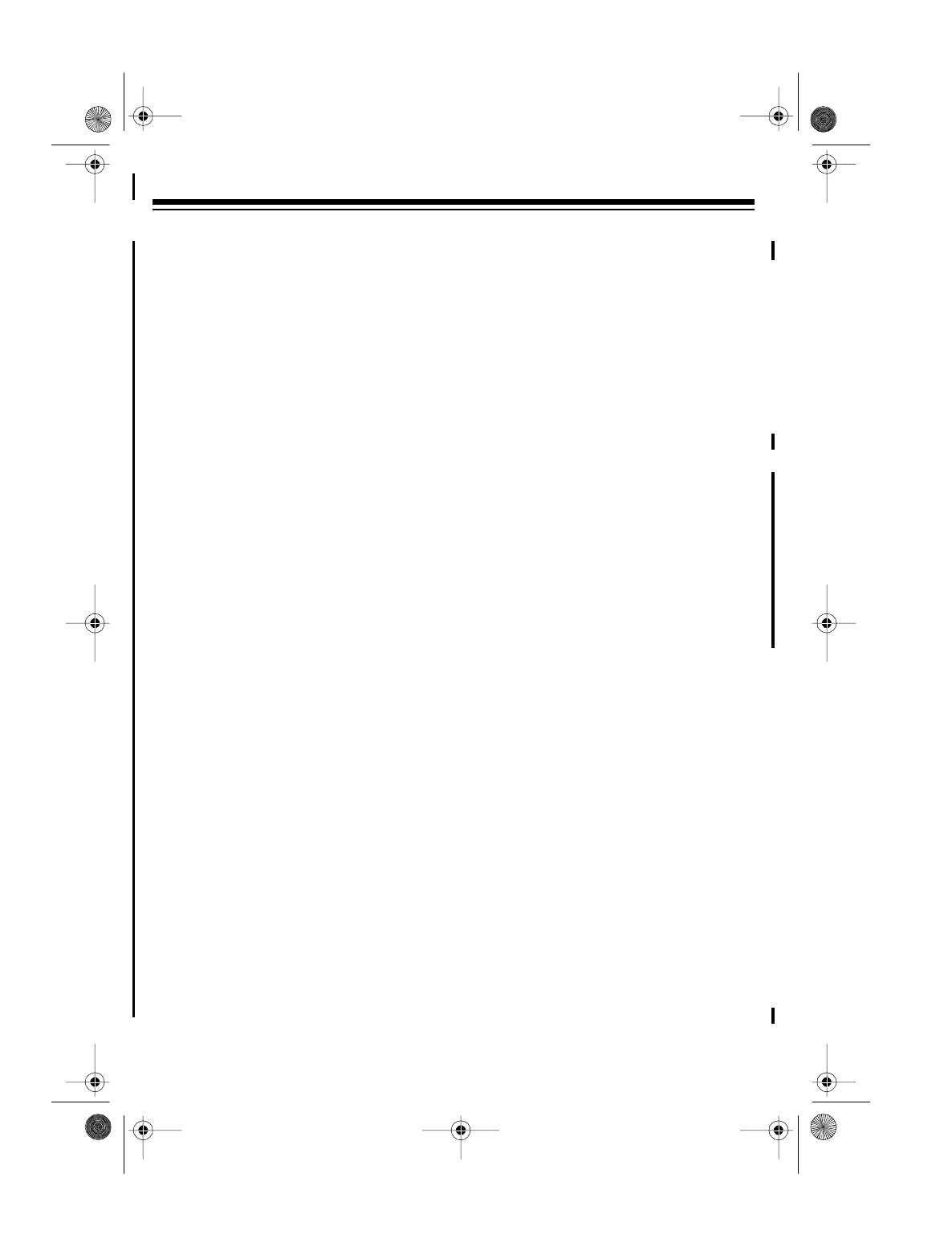
20
Storing a Number in Memory
1. Press
MEM
on the handset. The
TALK indicator flashes.
2. Enter the number and any tone or
pause entries (see “Using Tone Ser-
vices on a Pulse Line” on Page 19
and “Entering a Pause” on
Page 20).
Notes:
• Each tone or pause entry uses
one digit of memory.
• If you wait more than 20 seconds
to press a key or enter more than
16 digits, the phone sounds three
quick beeps. Start over at Step 1.
• To keep your accounts secure,
we recommend you do not store
your personal access code for
services such as bank-by-phone
in a memory location.
3. Press
MEM
, then enter a memory lo-
cation number (
1
–
9
). A tone sounds
to indicate that the number is stored.
To replace a stored number, simply store
a new one in its place.
To clear a memory location (leaving it
empty), press
MEM
twice, then press the
memory location number you want to
clear (
1
–
9
).
Entering a Pause
In some telephone systems, you must
dial an access code (9, for example) and
wait for a second dial tone before you
can dial an outside number. You can
store the access code with the phone
number. However, you should also store
a pause after the access code to allow
the outside line time to connect. To do
so, press
REDIAL
to enter a 3-second
pause after entering the access code.
For a longer pause, press
REDIAL
again.
Dialing a Stored Number
To dial a stored number, lift the handset
and press
TALK
. When you hear the dial
tone, press
MEM
, then enter the memory
location number for the stored number.
Chain-Dialing Service Numbers
For quick recall of numbers for special
services (such as alternate long dis-
tance or bank by phone), store each
group of numbers in its own memory lo-
cation.
When calling special services, dial the
service’s main number first. Then, at the
appropriate place in the call, press
MEM
,
then enter the memory location number
for the additional stored numbers.
43-732.fm Page 20 Friday, August 13, 1999 1:42 PM



